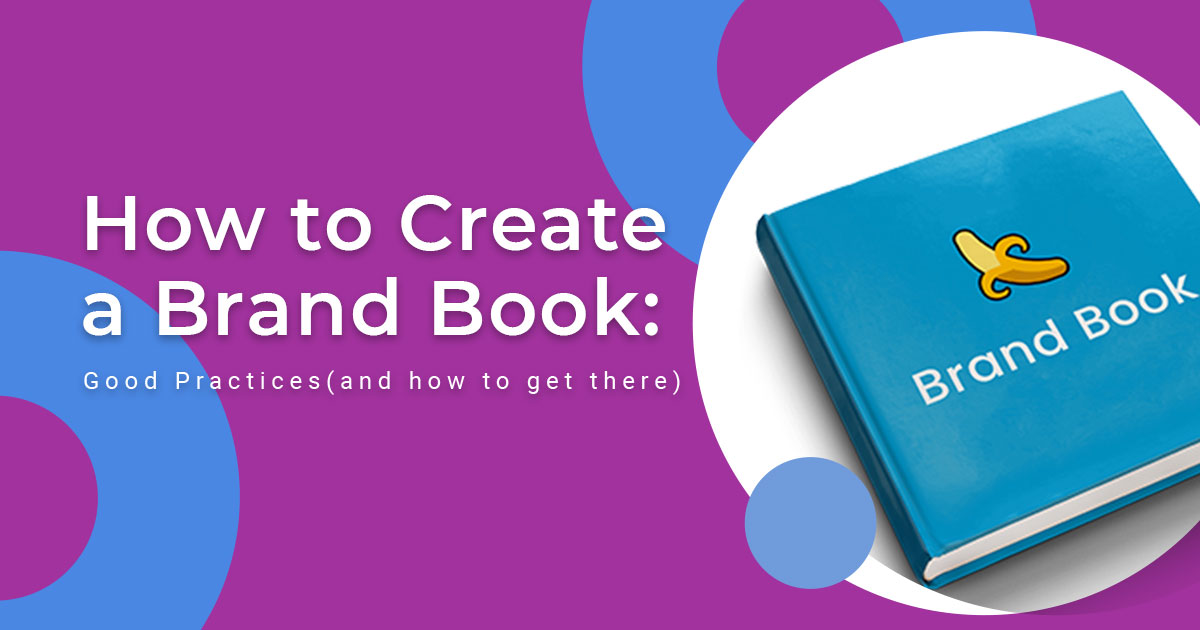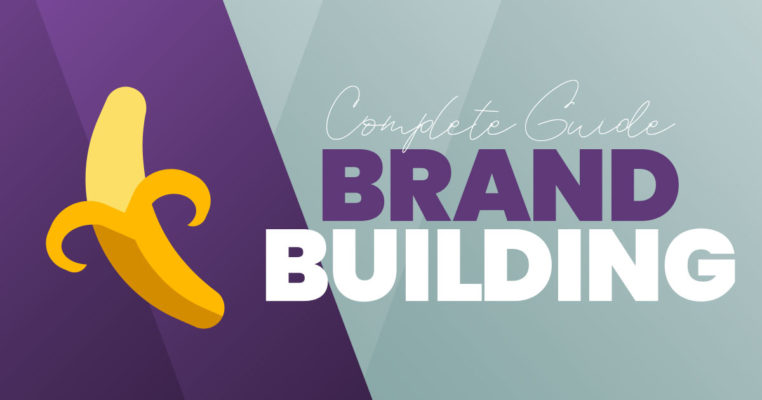If you’re a marketer, you know that a brand is more than just a name and a logo. It’s the personality of your company, it’s what makes people feel something when they interact with your product or service. And if you want to create a successful brand, you need to craft that persona in a cohesive way. A brand book is a perfect tool for doing that.
In this blog post, we’ll show you how to create a brand book, and we’ll give you some templates and examples to help get you started. Okay, let’s dive in!
What is a brand book and how does it help me build my business
A brand book is a set of guidelines to help you manage your company’s identity.
Such a style guide can include your logo, letterhead design, primary typefaces, communication style, design elements, and color palette, which will provide owners, employees, and vendors with the key elements they’ll need to represent your business. Put simply, it’s an instruction manual for your brand.
Creating an interactive brand book takes some time and effort but the benefits far outweigh any challenges. It can help your business in many different ways.
Why do you need a brand book?
Creating a brand book is one of the most important things you can do when starting your business or rebranding. Your brand book will act as a style guide to help employees learn and apply your identity standards and will be a reference for all graphics created in the future. Without a brand book, core values, graphic styles, internal communication and branding can quickly go off-track.
Gives your designers, writers, and developers a solid framework
Your brand book can serve as a reference for your design team and marketing teams. By providing them a step guide with fonts, secondary colors, alternate colors, and logo styles – you’re ensuring that all of your company visual content, branding decisions and each marketing campaign will be on-message and cohesive.
It brings everyone onto the same page: Your employees will be able to see what’s required of them each time they create a new design, and they’ll appreciate the consistency.
Helps you stand out from the competition
By creating a brand book – you’re showing that you take your company’s identity and design process seriously. You’re making it clear to everyone who interacts with your product details or service that you value professionalism and quality. In short – having a strong brand book will make your company look like a leader in your industry.
Supports marketing initiatives
A strong brand book can help you stand out in the digital space and build consumer trust. When they see a consistent image shared across all of your marketing channels – it makes them feel like you’re a legitimate business and that you’re the right choice.
Why is this important? Because it’s even more important for your company to have a strong image in the digital era. People are doing more research on products before they buy. They’re reading about your company online, comparing it with the competition to determine if your business is right for them.
Saves time and money by streamlining workflow
With a brand book, you’ll be able to create standard templates for all of your print and digital communications. This way, there won’t be any questions about the design process, house communications, substitute typefaces, mood board, or setting up a landing page. It will save you time, energy, and money by making things consistent throughout the company.
Gives clear guidelines for your brand
And finally, it lets you control how your company is represented to the target market. Without a brand book – your company’s design and messaging could end up looking like an ad hoc collection of images that don’t seem to fit together. A brand book provides clear guidelines for maintaining business consistency throughout all of your visuals.
Key elements of a brand book
#0 moodboard
Start right here.
Moodboards are a visual representation of the emotions and feelings you want to evoke in your design. They can be as simple as a piece of paper with some colors on it, or they can be elaborate collages made from photos, sketches, scanned material–whatever works best for you.

The moodboard should include details about who will see this board (i.e., client), what they’re trying to accomplish with it (i.e., creating an atmosphere), and any other pertinent information that might help define or describe the feeling behind your project’s concept(s). Think of them as mini-design diaries where all your creative impulses get translated into tangible visuals.
#1 strong logo
Use your logo consistently, and make sure it works in all sizes. Your logo should be displayed on every business card, letterhead, website header, product label, and more. It’s the core visual descriptor of your brand so get it right!
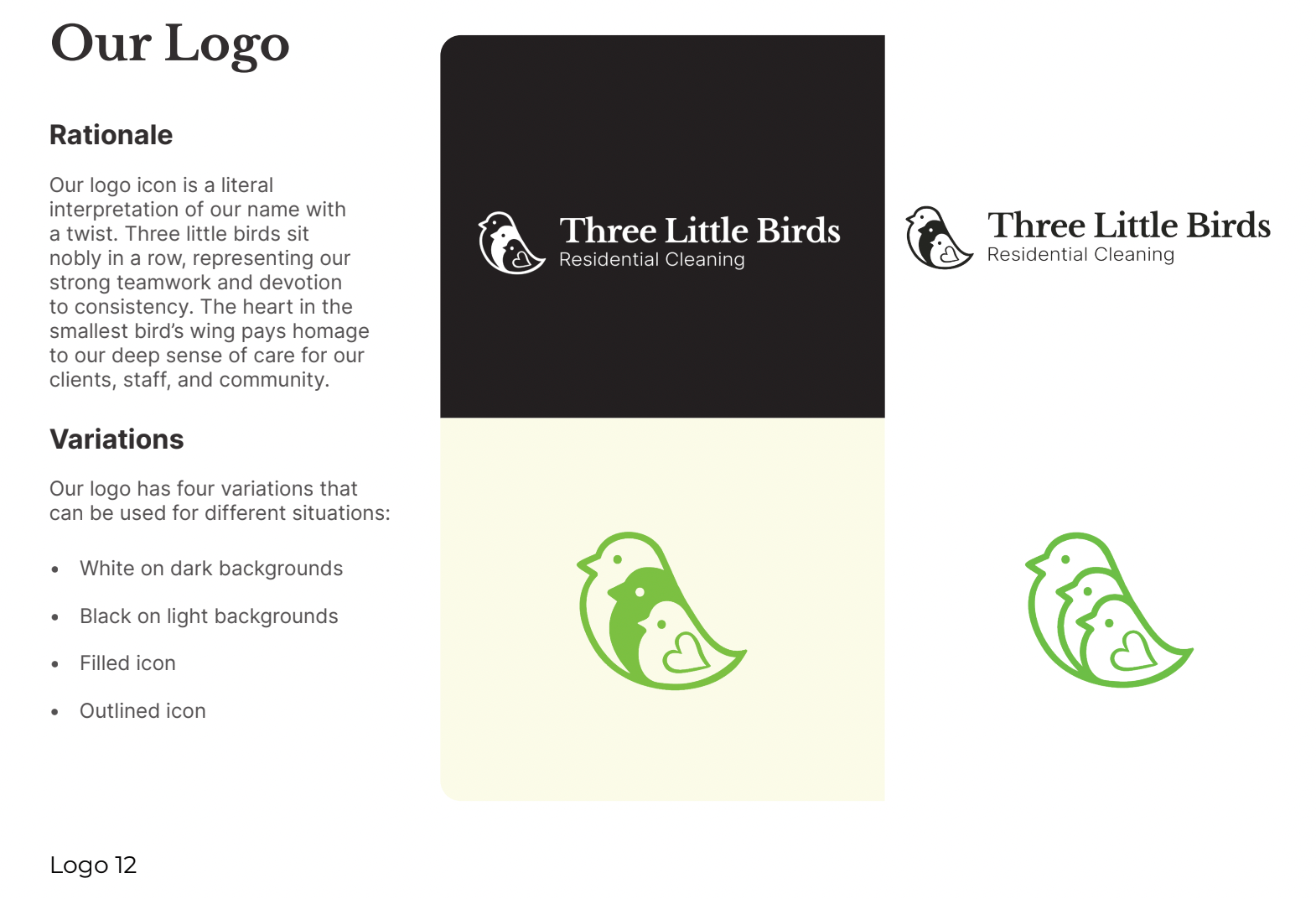
A clear logo will also help others remember and identify your brand, which can go a long way towards building a strong reputation for your business.
#2 logo usage guidelines
You need to provide guidelines for how and where your logo can be used.
Will it be reproduced in color only, or in black and white as well? What about on a dark background?
You’ll also want to show how your logo looks when reversed out of a box or placed over an image, and how it can be re-sized for different mediums.
A strong logo goes beyond the initial design – make sure you show your team exactly how to use it.
#3 color palette
Your logo may be the strongest element on all of your branding materials, but colors are another important component of your identity. Just like every business has a different logo, you should also have a unique set of color options that sets you apart from the rest.
Your logo’s colors will be used for everything, so make sure to define each color with a combination of shade, tint, and tone (warm versus cool). Some brands go so far as to define how light or dark each color should appear on your branded materials.
Take the time to define your brand’s color palette, and you’ll have a consistent look across all of your visual materials.
#4 brand color usage guidelines
Just like with your logo, you should include guidelines that define how and where each color can be used.
Will the colors only appear in their purest form, or will they be desaturated if necessary? What about using them on dark backgrounds?
And finally, it’s important to show your team how different shades and tints of the colors can appear on print versus digital materials.
#5 fonts and typography
First and foremost is the typeface you will be used for body copy. You should include a full list of acceptable fonts that can be used on any branded material. Be sure to include things like preferred format (TTF, OTF, WOFF, etc.), font size, and line-height.
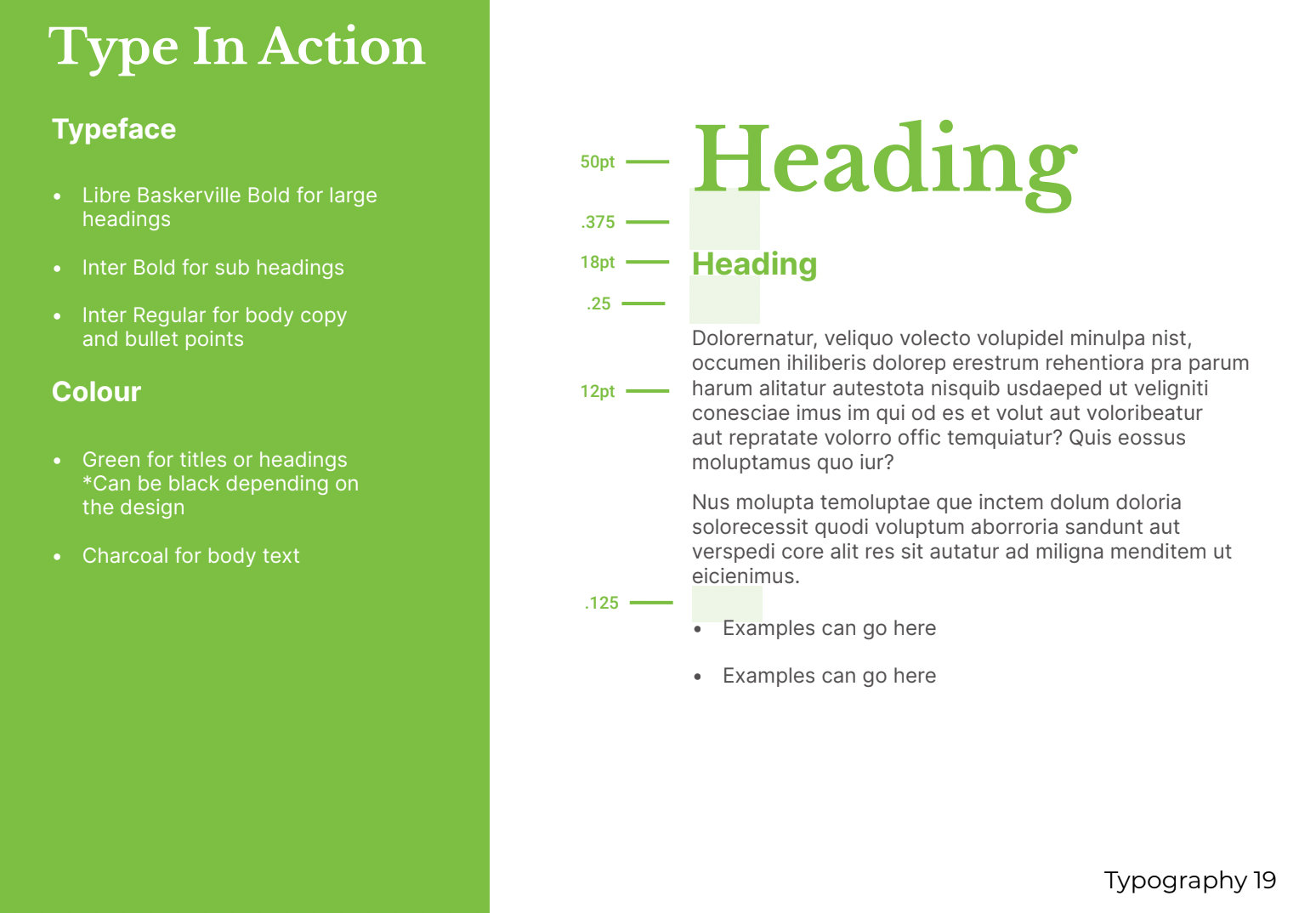
You should also include a list of any stylistic treatments that are off-limits for body copy. Some brands choose not to use underlines or italics for emphasis; others forbid the mixing of fonts on a single page. The more restrictions you have, the stronger your typography guidelines will be.
#6 imagery
Include a reference library of acceptable imagery that can be used to represent your brand. This might include photos of people at work or images from your product line.
You can also define how these images can be cropped and used. For example, a logo over a photo may need a specific size relationship in order to look balanced next to one another.
#7 usage restrictions (do’s and don’ts)
No matter how gorgeous your brand book is, nobody will follow it if they don’t know what the rules are. Make sure you include guidelines that show every team member exactly what is – and isn’t allowed.
Does using a logo in color mean that it can never be used in black and white? Would you prefer that images are only used if they’re captured during your company’s photoshoot?
Don’t assume that everyone knows the rules – spell it out for them.
#8 other design elements
You may want to create templates for things like business cards, letterhead, or other key branded materials.
This way, your brand will always look consistent no matter who is creating the final product.
#9 usage example
It’s important to provide examples of how all of these elements should be used together on one page.
For this reason, create a mockup that you can use as a reference. If you are creating the brand book by hand, simply take photos of all your branding elements in action.
Without examples of proper usage, nobody will know whether or not they’re following your guidelines correctly.
#10 brand tone and voice
You may want to create a brand voice and tone guide that goes beyond just visuals. This can include things like the level of formality you intend to use when communicating about your company, or how you write product descriptions.
Can’t stand jargon? Let your team know it’s a no-no in any official communication from the company.
#11 icon and watermark usage
You might want to create usage guidelines for your logo’s associated icons and watermarks.
For example, is there a special version of the logo that can be used on dark backgrounds? If so, include it here.
You should also define what size these icons should appear in order to maintain visual consistency.
Does every brand have to have a watermark? Or can they choose to exclude it?
And finally, how should the watermark be applied – as a square or circle? Does this change depending on whether it appears in print media or digital images?
The last thing you want is inconsistency across all of your branding materials. Make sure everyone knows what’s acceptable and what isn’t.
#12 content usage permissions
Make sure to include a list of permissions for your content usage. This includes both images and text (including blogs and articles).
Do you want to make all of your content available under a Creative Commons license? Or perhaps you would prefer to only allow certain users access to this information.
Include guidelines for both images and text within this section. This way, everyone will be clear about what they can – and can’t – use from your blog or articles.
#13 social media guidelines
This guide will be useful to both internal and external marketing teams. You should always allow your marketing team to promote your company on social media, but you may want to regulate how this is done.
To make your accounts cohesive, outline specific requirements, e.g. by preparing a social media post template.
For example, you could specify the type of update, media usage rights, or how many hashtags are allowed.
Give your internal marketing teams clear instructions on how to use social media.
#14 social media cover templates
When creating your social media accounts, you are bound to have some images that are more generic in nature.
This includes things like cover photos or posts with no specific call-to-action (CTA), e.g. “What do you think about our latest product?” These types of photos should be saved in a dedicated template library for easy access.
#15 advertising templates
Creating a coherent brand image online is super important, take care of that by creating advertising templates and putting them in your brand book.
It will help to maintain consistent messaging using the same photos and colors, across all social media platforms you use; not changing your ads each time can save money too.
Add your logo, tag line, etc. to make it look like an ad instead of a random image.
#16 site and app screenshots
Whether it’s your website or an app, you’ll want high-quality related images at hand whenever possible.
If you don’t have a professional photographer on-site (or even if you do), make sure there’s a list of sites that provide royalty-free images that can be used for this purpose.
#17 company core values
Finally, no brand book would be complete without a section that describes what your company stands for and who it’s meant to serve. Remember, this isn’t just about aesthetics – it’s about the best way to tell your story.
#18 usage example (print)
You may want to include print-specific examples of approved usage for all of these elements. For instance, you could include an example of how your logo looks in newspaper print when compared to web or digital signage. You might even provide different color palettes to choose from.
#19 usage example (web)
People shouldn’t have any problem finding your website’s homepage, so you shouldn’t have to provide a web-specific example for this component. Simply include the URL instead.
#20 copyright information
And finally, include a copyright symbol on every page of your brand book along with a statement that states which company is responsible for its creation.
This way, you’ll have a clear copyright policy in place and a complete guide on how to represent your brand online.
Of course, the elements we mentioned are only examples and you can adjust them to your own brand book so it suits your needs.
How to create your own brand book in 5 easy steps
#1 Write down your brand purpose
Create a clear statement of what you want to achieve with your brand. What is the main message you are trying to communicate, and how do you want people to feel when they see it?
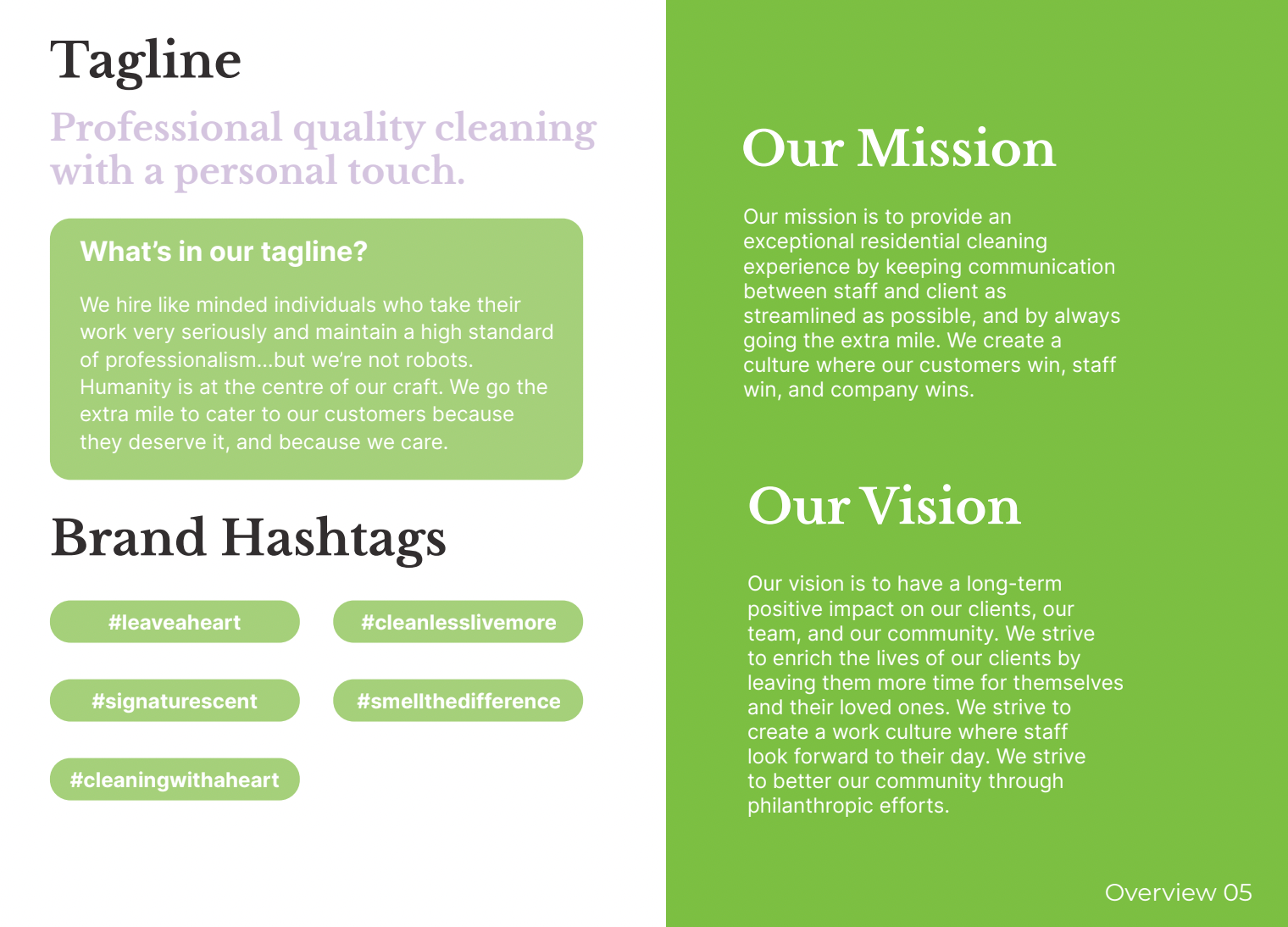
This is what will hold your brand together and give you a place from which to build up the rest of your guidelines.
#2 Develop a wireframe for your brand book
Now that you have set the guidelines of what should be included in your brand book, it’s time to put everything in a logical order.
Draw a wireframe for each section and use it as a base to create your individual sections. Don’t worry about the aesthetics yet.
#3 Create a cover design
According to one study, visual content is processed 60 000x faster in the brain than text. That means you only have a couple of seconds to make an impression so the imagery is crucial!
This might be the hardest part of the process – coming up with a compelling visual that accurately represents your brand. You may want to collect inspirational images from all over the web or hire a graphic designer to get started.
Start finding images that perfectly represent what your brand stands for.
#4 Include all the key elements listed above
Make sure to include all the elements you want in your brand book. Check it twice to make sure you are not missing any important elements.
#5 Put it through the review cycle
Once it’s completed, your brand book is not set in stone. You will need to review and update it often to keep up with the changing face of digital marketing.
Your brand guidelines are a living document that will evolve with time, so don’t forget about them!
Tips and tricks on how to use your new Brand Book as an effective marketing tool
#1 Share the brand book with all employees
Whether they are part of the marketing team or not, this is an excellent way to save time on research and avoid mistakes.
Anywhere you see a visual that needs to be created for your social media accounts or printed materials, refer back to the brand book first. This will ensure everyone is on-brand at all times.
#2 Use your brand book as a reference guide for designers, developers, and writers
Don’t forget to include any rules and guidelines you might have for those professionals as well. After all, they’re responsible for making sure everything is in line with your brand identity.
If you give them a color palette to choose from, for example, then they need an example of how to use it correctly.
This is your one-stop source for all the latest news and information about X!
#3 Include an index in your brand book
An index allows people to quickly navigate parts of your guide without having to read through page after page. This way, they can quickly find the information they need.
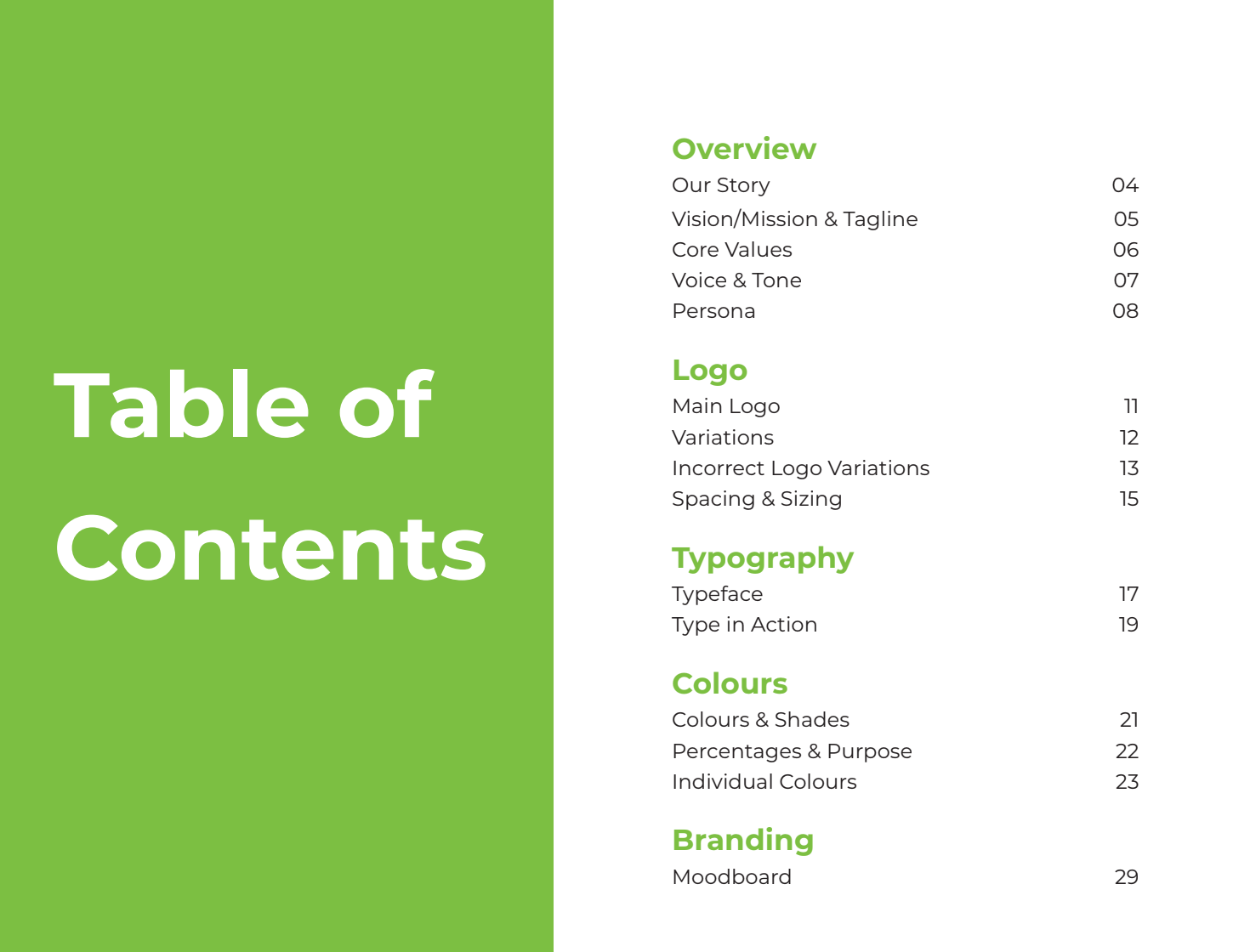
#4 Use an appendix for additional information
Including a glossary of terms is a good idea as well. For visual elements, list examples of what you’re referring to with links back to those parts in your brand book.
For example, if you have a certain font that needs to be used for headings, provide a link that goes to the index where they can find more information about fonts.
#5 Use your brand book as a conversational tool
Your brand book is not only meant to be used by employees, but also for customers and anyone who has a question about what the project represents.
You want all your messaging to be consistent and easy to find, so make it accessible if you answer the same questions over and over again.
By including answers in your brand book, people can easily access information without having to contact you for answers they could otherwise find online.
#6 Involve employees in future updates
Your brand book’s success depends on everyone’s willingness to work together and make sure everything is in line with your brand identity.
That’s why it’s important to get input from everyone, including people on the front lines (e.g., customer service).
If you get an idea for an element that would benefit the whole organization, let them be a part of it too. And who knows, they may come up with a feature you never thought of!
#7 Use your brand book to give colleagues a better understanding of your organization
People like familiar faces and the easiest way to make them feel more comfortable is to surround them with information that makes you look like a team they can trust and communicate with.
Your brand guidelines should communicate your culture, what defines you as an organization, and who your ideal customers are. This can also be an important part of onboarding in your company – everyone, from day one, knows what the organization stands for.
#8 Use your brand book for all marketing campaigns
Whether it’s a simple social media post or a full-blown ad campaign, use your brand guidelines to keep everything on-brand.
Your team will thank you when they don’t have to search through multiple documents or try to recreate an old design that’s no longer in the guide.
#9 Use your brand book as a training tool
Once employees have been informed about the branding standards, send them a link where they can find examples of what you consider ‘on-brand’. You can even require them to email back their draft before their final piece is submitted to avoid mistakes.
#10 Create templates and use them every single time
If several people will be creating and sharing content for your social media accounts, you can save time and money by providing them with pre-made templates to create their ads.
Instead of having to explain the specific guidelines each time, you can just send them a link to your brand book so they can refer to the right design each time.
#11 Make sure to update your brand book regularly
As you continue to grow, your brand might change as well. Keep the core ideas of your branding strategy in mind, and update the text or imagery that is no longer relevant to your company.
By keeping your brand book up-to-date, you can avoid confusion and mistakes.
#12 Organize your files so it’s easier to find them later on
Not only should you include links for additional information in the different pages, but also make sure to organize things in folders. So if an employee wants to know more about fonts, he will be able to easily find the link you included within the branding standards document.
#13 Make it accessible for people who are not in your office
Your brand book should be an open-source tool that everyone can have access to, not just those in your office.
Instead of sending people a link to the documents they need every time you want them to have access to it, create a central location in your website where everyone can download a copy. You can upload it to a cloud, for example.
#14 Check if all already existing elements are in line with a brand book
If you have an already existing brand or campaign, you can use your brand book to check if all the visuals and texts fit in line with it. Even though you might not update anything at this point, having a reference like this will make sure everything is on-brand.
#15 Make sure your employees are happy to work with it
Don’t forget that making these changes might affect the workflow of some members of your team. Be sure to explain the benefits behind every change you want to make so they are happier about using a brand book.
The most common mistakes to avoid while creating your brand book
Don’t try to include everything in your brand book
A brand book can be a great way to communicate your branding guidelines to employees and other stakeholders, but it’s important not to make it too long or detailed. Keep it concise and easy to read, with clear instructions on how to apply the branding guidelines. If you don’t, it will just be ignored by most employees.
Don’t forget the brand’s voice
Even if you’re going for a more corporate tone, make sure your brand book has a bit of personality and that it doesn’t sound too formal – especially when sharing your branding guidelines with your employees! Make it presentable by limiting the amount of jargon used.
Don’t neglect proofreading
Even though designers or marketers might not be very technical with words, don’t forget to give it a read through before publishing the final version – especially if those who use it won’t be familiar with the brand’s tone of voice. Have someone else go through it as well, just to make sure there are no spelling mistakes or punctuation errors that could affect its readability.
Don’t forget: change is constant
As we said earlier in this article, your business and your brand might not always look the same way, so be prepared to update your brand book.
Don’t create a brand book that’s difficult to update or change
If it will take too long to make changes in your brand book, your employees might be discouraged from using it. Remember that in order for a brand book to work it should be easy and effortless to create and share branding visuals.
Make sure it’s easy to find and access the right templates every time.
Every designer should have all the templates they need at hand before starting a project. Instead of having to hunt for the right brand books, make it easier by including links to your templates in every email or memo that you send out about branding projects.
Don’t forget to involve your team in the creation process
Even if you’re the one who created and designed your whole brand, it’s important to get feedback from everyone. Employees will be more engaged and likely to work within the guidelines of your book if you include them in the creation process.
Don’t neglect design quality
When designing a brand book, don’t forget the basics: make sure all pages are aligned and have consistent spacing. In addition to this, you can include essential branding design rules, such as using specific fonts for each section, choosing colors carefully, etc. It will be much easier to read and easier to use if it looks good.
Don’t make changes without informing your team
While updating your brand book, you might find that certain elements are no longer relevant. If this is the case, make sure all employees working with branding are informed of these changes in time – for example when they’re about to start a new project. This way everyone will know what to expect.
Examples of different types of branding books
1. Foundation brand books
These are the most basic type of brand book, and they usually just outline the company’s story, values, and mission. They’re meant to serve as a reference guide for all employees so that they can stay on message when communicating with customers or stakeholders.
2. Marketing-oriented brand books
As you might expect, these brand books focus more on the marketing side of things. They usually include detailed information about the company’s branding strategy and how it should be implemented across the marketing mix.
3. Brand style guides
As their name suggests, these brand books are all about guiding employees on how the company’s brands should be presented in different contexts. This includes visual branding elements like logos and color palettes, but it can also include tone of voice and language guidelines. The goal is to create a unified look and tone across all of the company’s brands, while still making each of them feel unique.
4. Tone of voice style guide
A tone of a voice style guide is a tool that tells employees how your brand sounds like. Some companies decide on a specific tone or attitude they want to convey through their content, such as friendly, clever, or funny. This guide will include examples of words or phrases to use, as well as specific guidelines for writing style.
5. Brand library
These are tools that give employees access to all the visual brand elements they might need for their work, which can include logos, color palettes, icons, typography rules etc. They’re usually organized by category and/or purpose so that people can easily find what they’re looking for.
6. A guideline manual
A guideline manual is a more general document that tells employees about relevant aspects of your brand. This can include information on how your company should be treated online, what the voice should be like etc. A guideline manual might also include information on how to use the brand book itself, such as who should be responsible for corrections.
Now you know how to create a brand book for your business and what you can do with it, so go ahead and put this guide into action! It’s time to work smarter, not harder, by streamlining your marketing efforts and creating a solid brand identity.
Brand book FAQ
What is brand book design?
The brand book design is the main element of the branding process. It’s where you decide how your logo, colors, fonts etc should look like. It’s also where you define your brand rules, so use it to include visual design guidelines for all elements of the branding process.
You should have this document approved by everyone who is involved in the branding project before moving on to creating other materials.
Who uses a brand book?
A brand book is primarily used by branding teams, marketing managers, and marketing support staff. This includes copywriters, graphic designers, marketing consultants etc.
It’s also a useful tool for anyone who’s involved in the branding process – from senior management to client service employees.
How long should my brand book be?
Your brand book should contain all the information you need about your company’s branding, but it doesn’t have to be super long. A foundation brand book might only include one or two pages of content, while a more complex company with several brands may need something that is around twenty pages long.
Is a brand book necessary?
Yes. A brand book is a must-have for any company that wants to make a lasting impression on their target audience and build a strong brand identity.
What to know before creating a brand book?
There are three things you need to consider before creating a brand book:
1. Make sure you know your target audience and their needs, so that the brand book reflects them accordingly.
2. Define how your brand should be presented across the different elements of the marketing mix (product/offering, pricing, distribution etc).
3 Your brand book should always reflect your company’s values and include all relevant information about your business.
Why do I need a brand book?
A brand book helps you stay consistent with your branding efforts, as well as make sure everyone knows what your company’s voice is. With a brand book in place, employees can easily access important information and better understand the who, what and why of your business.
It’s the best way to make sure that the content that you publish is relevant and on-brand.
Why do I need to update my brand book?
Your business changes all the time, so you should ensure that your brand book is up to date with accurate information about your company. If you’ve changed something significant in your marketing mix (a new product, a change of messaging etc), then it’s time to update your brand book accordingly.
What is color theory and how does it apply to branding?
Color theory is the study of colors, including what they mean and how they make people feel. You can use this knowledge to create a setting that fits with your company’s branding and give each person a sense of belonging.
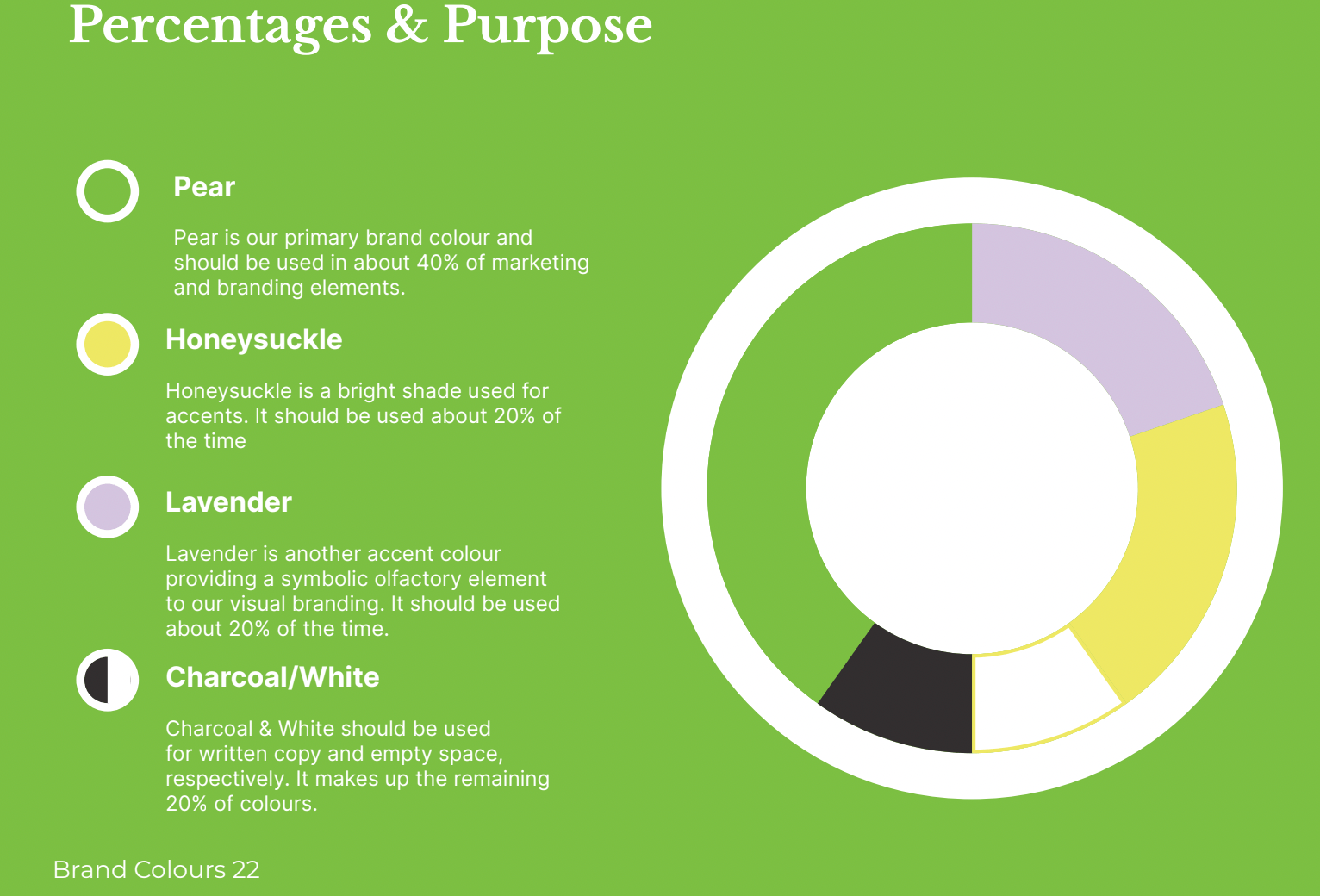
When you’re designing a brand book template, consider color theory as a way to reflect the emotions you want to evoke in your target audience in the page layout, graphics and images.
How much does designing a brand book cost?
The price of designing a brand book template can vary, but it’s usually not that expensive. You can hire freelance graphic designers on sites like Upwork to create your branding materials according to the logo design requirements you provided them with.
Designing a brand book template is a great way to create a template that you can use repeatedly in the future, so it’s always better to invest a little money into it.
Why should you develop your brand book with SociallyInfused?
SociallyInfused offers a full suite of branding services to help your company build and nurture its brand. With us, you’ll get access to:
- Business branding: We’ll help you understand your target audience and work towards creating the best messaging with our creative team.
- Website design: build your website according to your brand book and branding standards
- Google ranking SEO: get more website visitors through our SEO services
- Social media: improve your company’s reach and engagement through our fully-managed social media service
We’ll work closely with you to develop a rewarding customer experience for both internal employees and external audiences. We’d be happy to answer all the questions you might have about how we work and what services we offer.
To find out how we can help you build and nurture your brand, get in touch with us.
